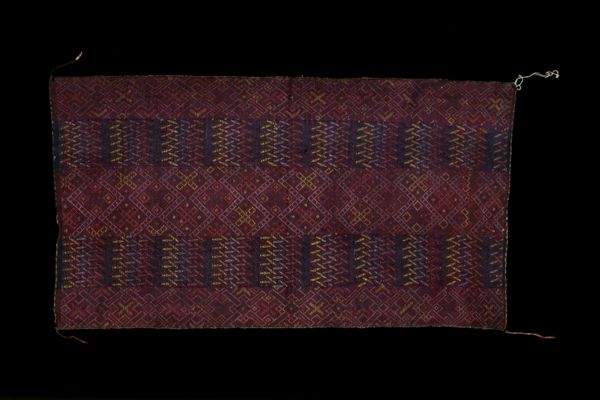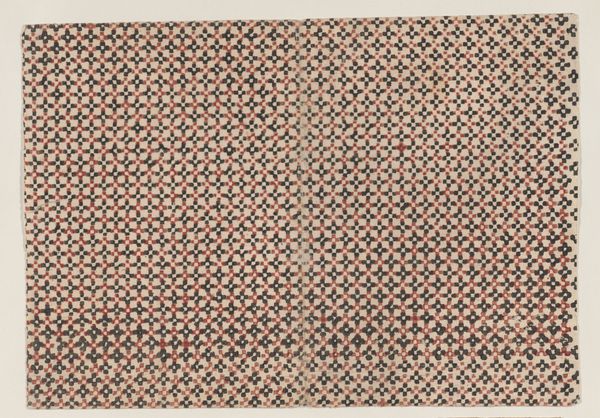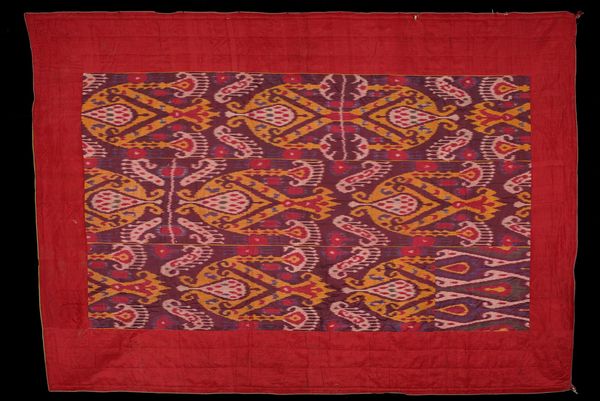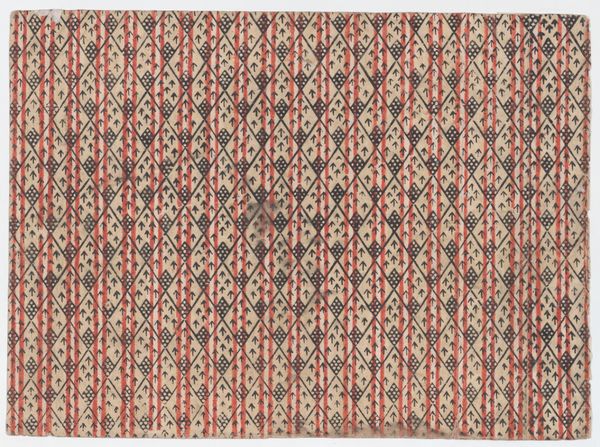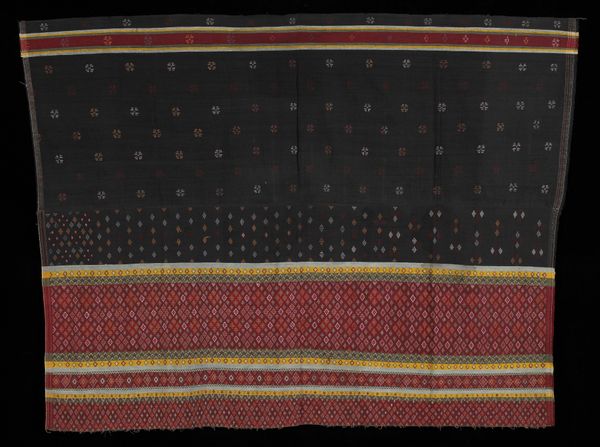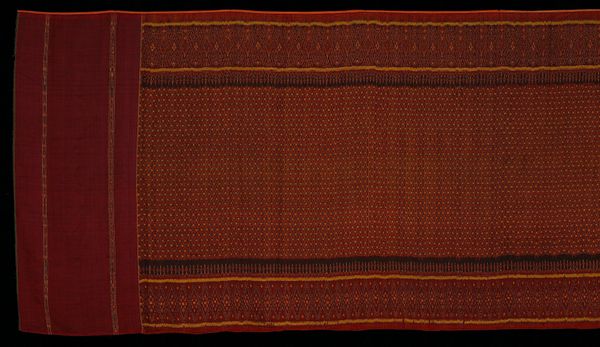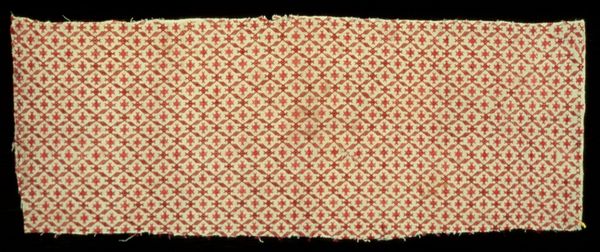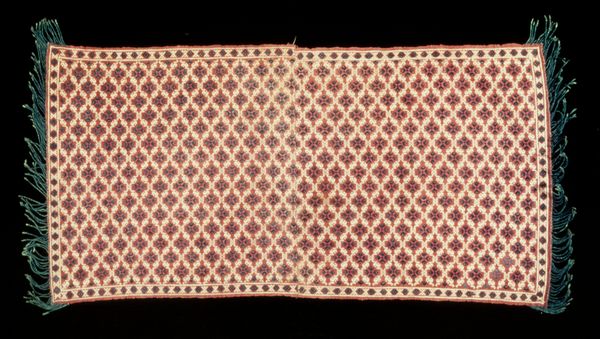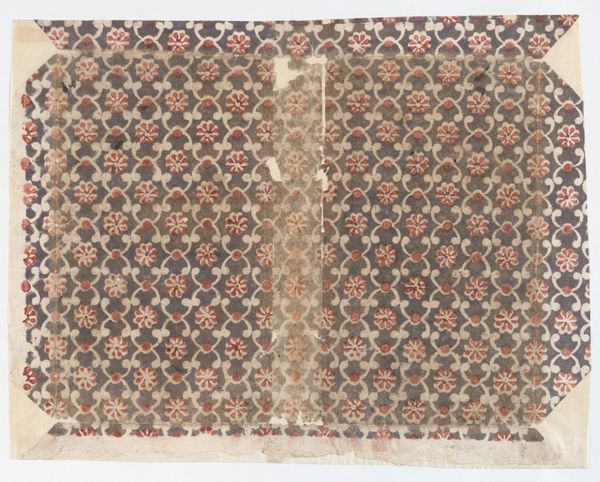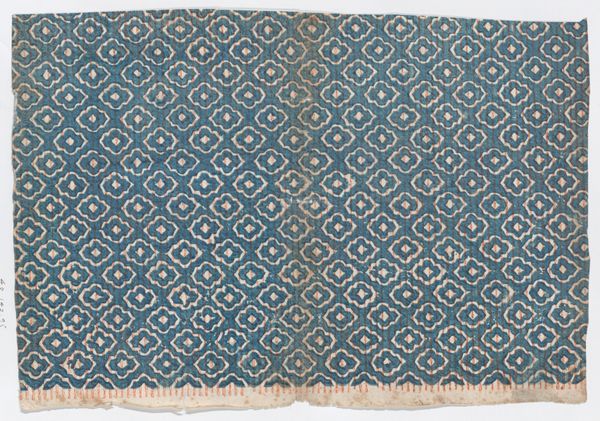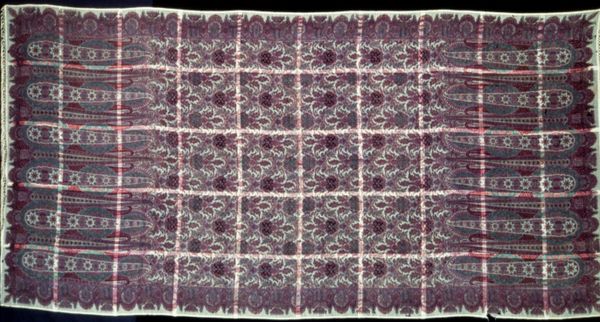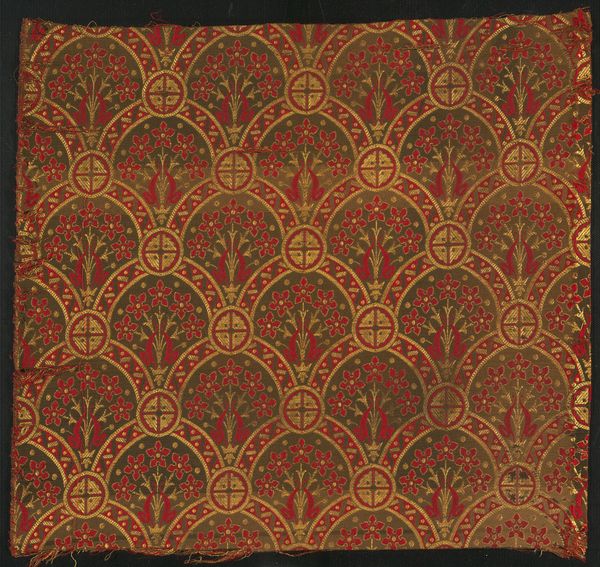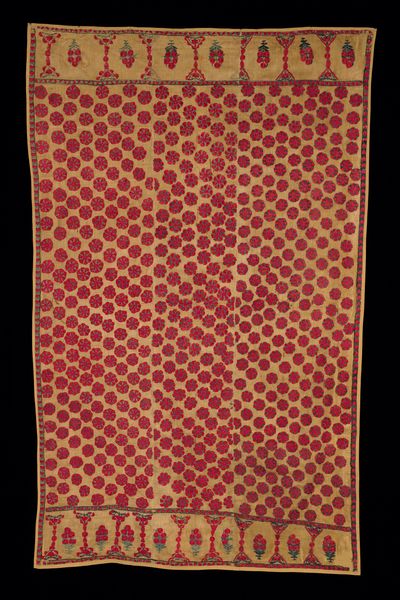
textile
#
textile
#
geometric
#
decorative-art
Dimensions: 43 5/16 × 103 15/16 in. (110 × 264 cm) (approx.)
Copyright: Public Domain
This "Sarassa" textile was made in India, likely during the 18th or 19th century, using mordant-painted cotton. The deep red base and intricate patterns weren't simply painted on. Instead, skilled artisans applied mordants – metallic salts – to the cloth, which then fixed natural dyes, creating a lasting design. This labor-intensive process demanded precision, as each color required separate mordanting and dyeing stages. The textile's vibrant palette and complex geometric and floral motifs reflect both the rich artistic traditions of India and its role in global trade networks. Textiles like this were highly sought after, and their production involved entire communities, from cotton farmers to dyers and painters. Recognizing the inherent value of the materials and processes used in this work, alongside its cultural and historical context, enriches our understanding and appreciation, blurring the lines between art and craft.
Comments
No comments
Be the first to comment and join the conversation on the ultimate creative platform.
